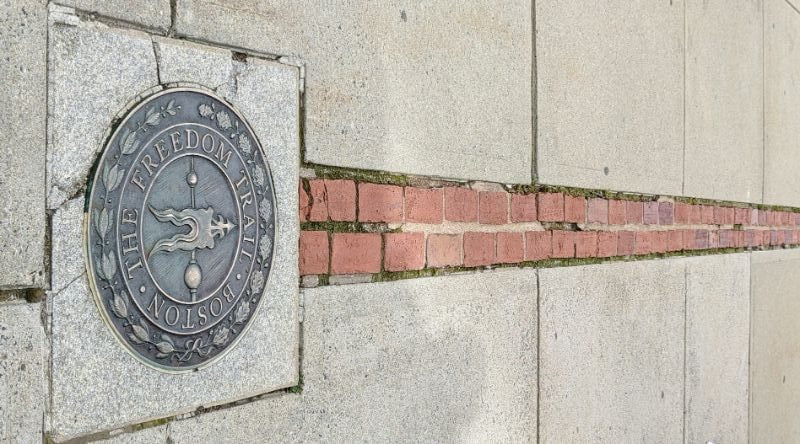
Following The Freedom Trail
As most people can attest, growing up in an area with many sightseeing opportunities does not guarantee you will ever actually visit those areas in your lifetime. This is usually due to the desire to avoid tourists, avoiding looking like a tourist, or presuming that the thing to see will always be there so you can always see it some other day. Such was the case for us with the Freedom Trail in Boston, Massachusetts.
For those unfamiliar, the Freedom Trail is a 2.5-mile brick-lined route that leads you through some of the most iconic and important historical sites in Boston, all originating from the time of the American Revolution.
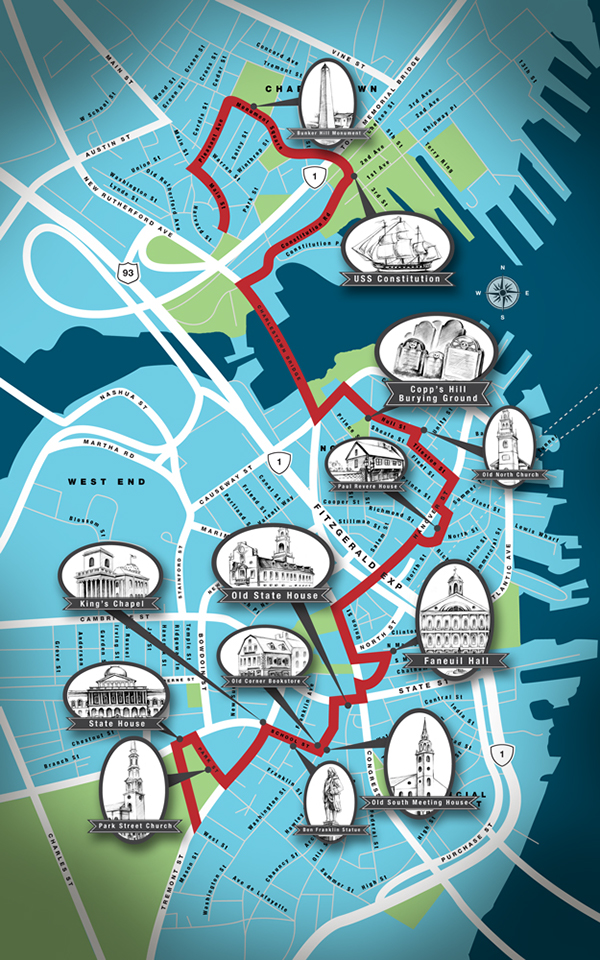
Although Rhonda and I have seen parts of the Freedom Trail over the years we have visited Boston, we realized that we never actually hiked the whole thing! And since we were visiting my brother Dan in the Boston area, we decided to remedy that situation.
Starting at the Boston Common and Boston Public Gardens
We took the subway from my brother’s place to Boston Common where the trail begins. It is the oldest city park in the United States and is the site for many city events.
It was a lovely park with numerous monuments…

And many places for families to entertain themselves. Or just lie down on a blanket and relax!
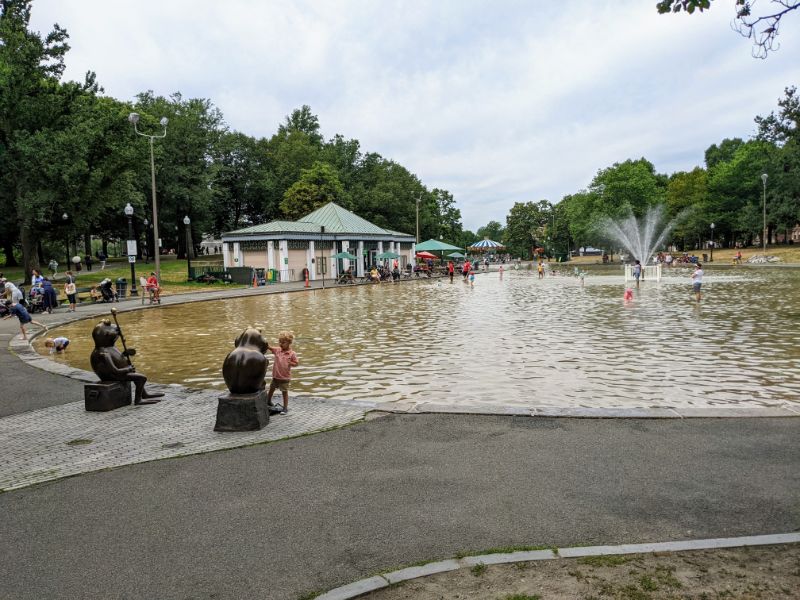
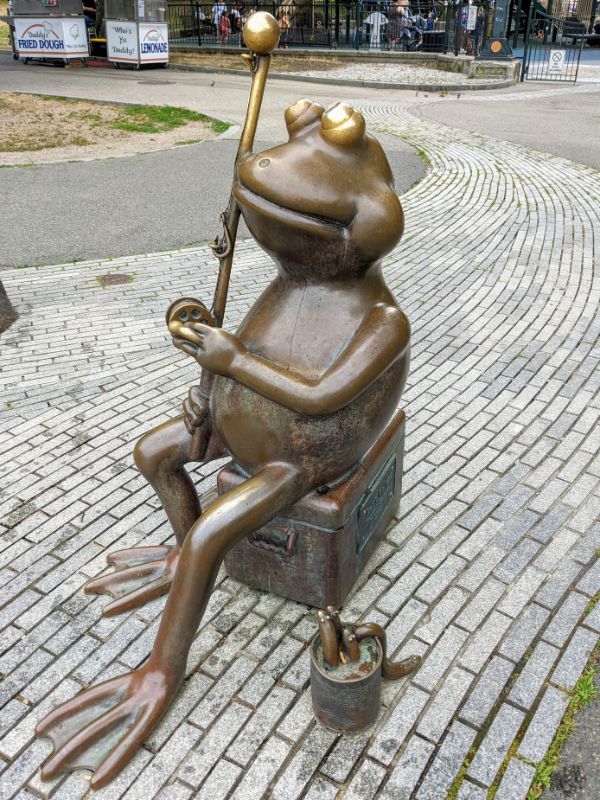

True to form, we quickly were drawn to the adjoining Boston Public Garden to enjoy the more natural areas. We spent quite a bit of time exploring the grounds and were impressed with the many botanical and horticultural displays.
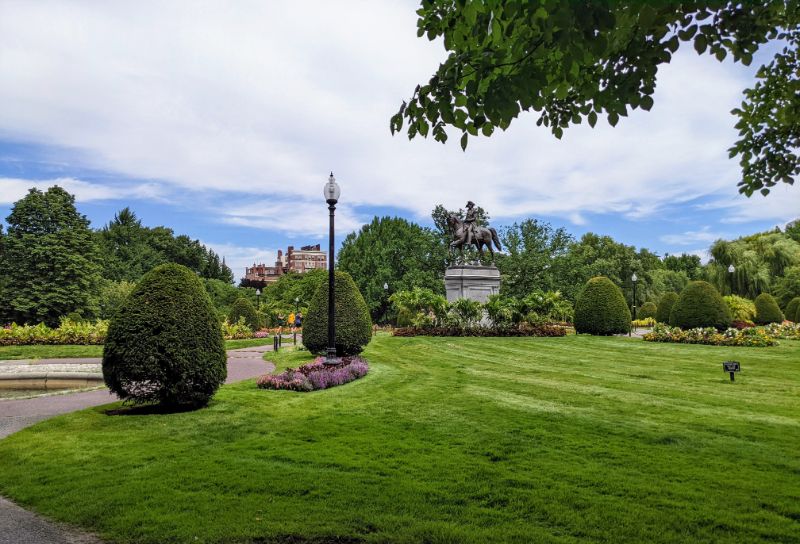

This is a gorgeous Dawn Redwood tree.
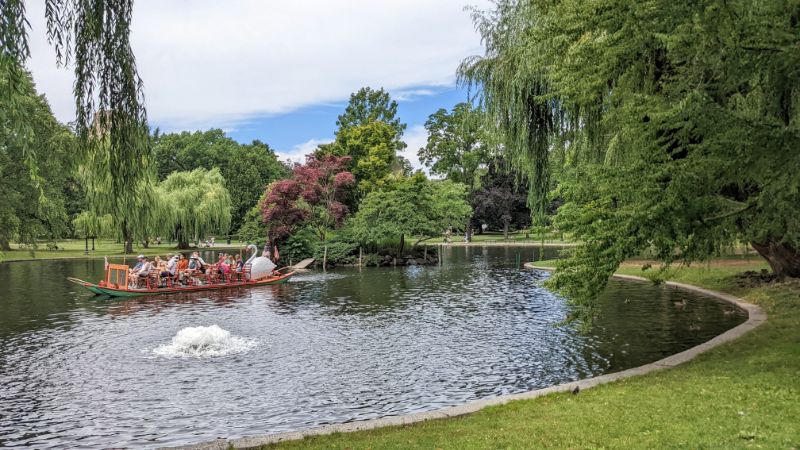

Having gotten our botanical fix, we began following the Freedom Trail in earnest!
Stop 2 – Massachusetts State House
A short distance down the Freedom Trail, we encountered the Massachusetts State House. It was a beautiful building that was in having its exterior renovated when we visited. Built in 1798, it is the oldest state capitol that is still in use!
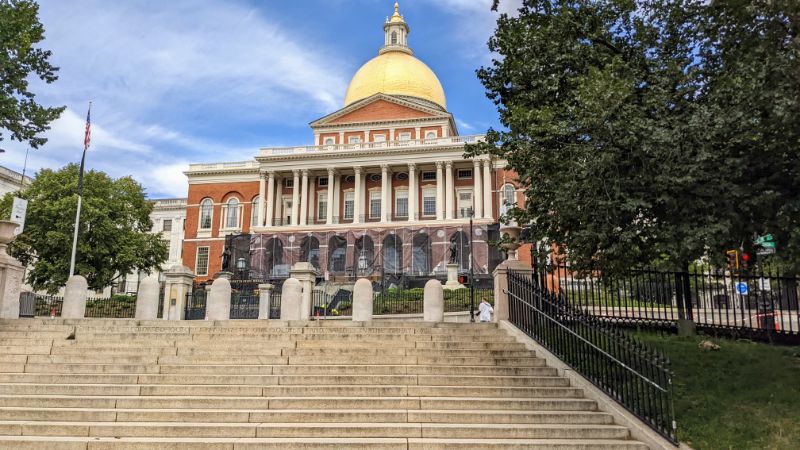
Stop 3 – Park Street Church and Granary Burying Ground
Continuing to follow the Freedom Trail for a few blocks, we came across the Park Street Church and Granary Burying Ground.
Park Street Church, built in 1809, is notable for its Trinitarian theology and application of scripture to social issues.

And the adjoining Granary Burying Ground has its own interesting history. It is the burial site for a number of notable Boston residents, including Samuel Adams, Peter Faneuil, John Hancock, and the family of Benjamin Franklin (but not Franklin, himself).
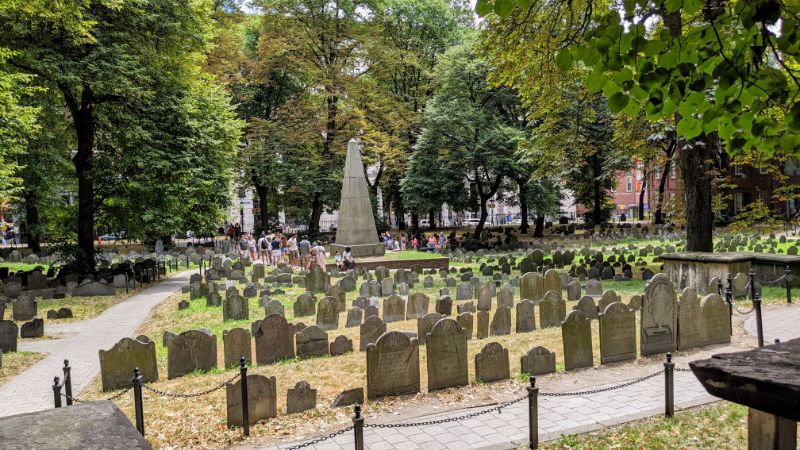
We were immediately attracted to the old gravestones with morbid carvings. Most had similar imagery.

Stop 4 – King’s Chapel and King’s Chapel Burying Ground
After walking several more blocks we came upon another Freedom Trail stop, King’s Chapel.
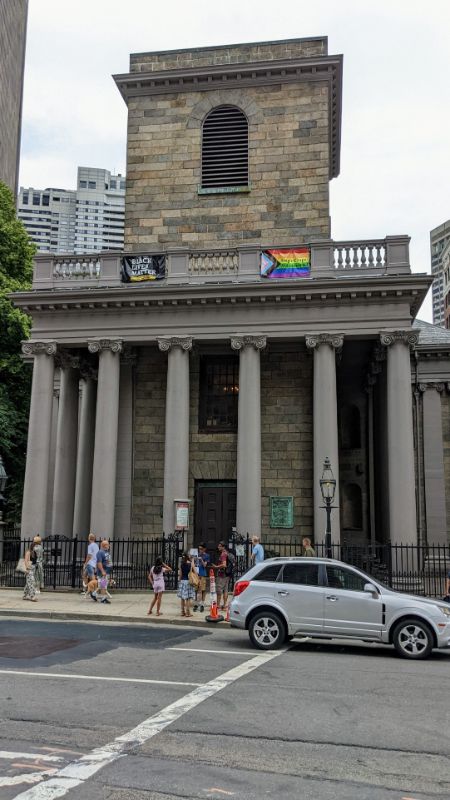
Built in 1688, it apparently was the first Anglican church in New England. And of course a church this old must have an appropriately spooky burial area of historical importance.
It delivers in the form of the King’s Chapel Burying Ground, although strangely it is not affiliated with any church.

Although there is no one of national importance buried here, there are a number of locals of regional importance. Check out the above link for a list of notables and their accomplishments.
Stop 5 – Statue of Benjamin Franklin
Yep, it’s a statue of Benjamin Franklin.
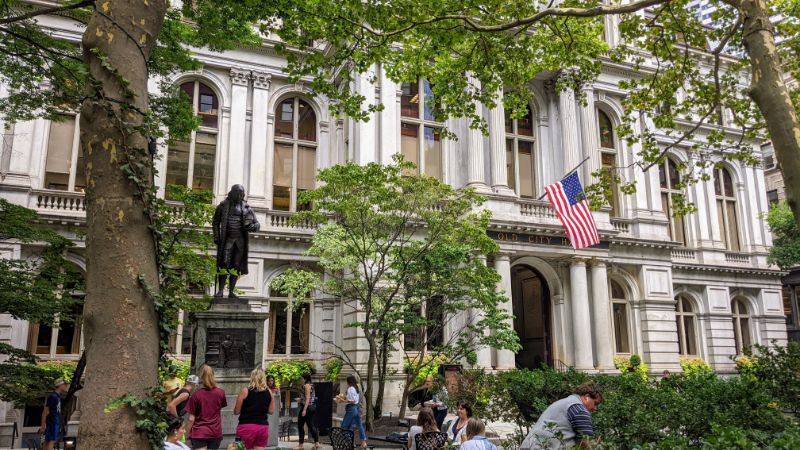
And there is a Ruth Chris’ Steakhouse through the large arched doorway on the right if you are feeling peckish.
Stop 6 – Old South Meeting House
We walked several more blocks past the man in a bear suit playing dance party versions of Spandau Ballet songs when we came upon the Old South Meeting House.
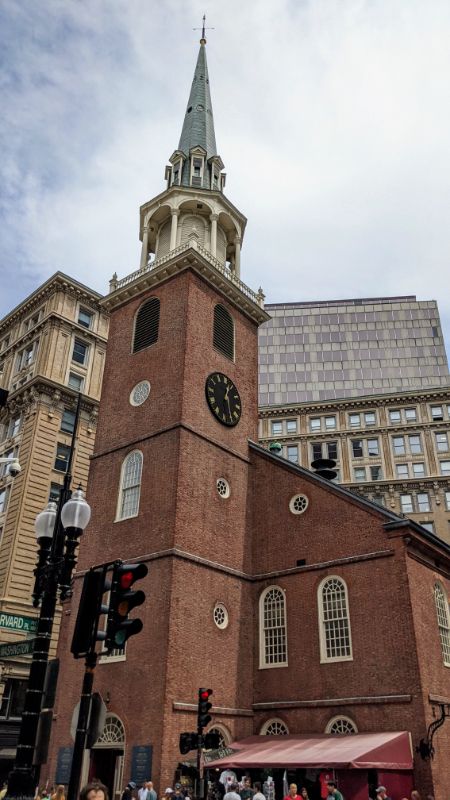
Once a church, the building turned into a meeting place during colonial times. And on the cusp of the American Revolution, this is where the Boston Tea Party was planned.
Stop 7 – Old State House and the site of the Boston Massacre
Continuing onward, we came across the Old State House, which was where the Massachusetts General Court presided until 1798.
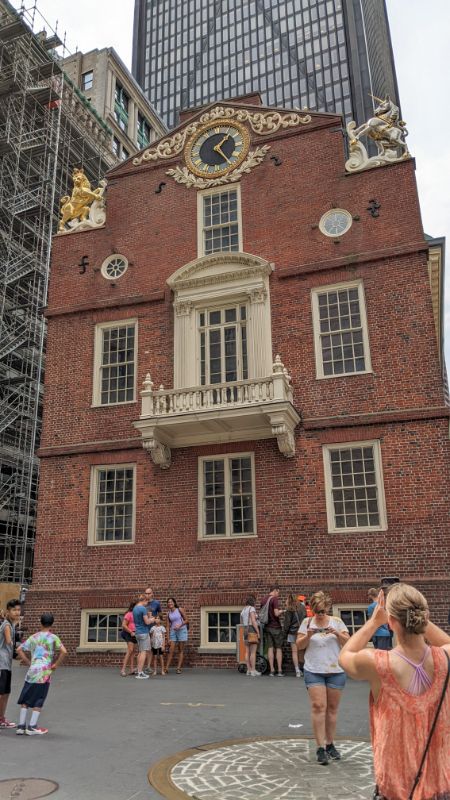
Note the circle on the ground, marking the site of the Boston Massacre. This is where nine British soldiers shot into a crowd of hundreds of Bostonians, who apparently were doing less than kind things to them. Five people were killed in the incident.
Stop 8 – Faneuil Hall
Following the smell of grilled meat (and the trail path), we reached Faneuil Hall.

This historic public market house is often referred to as the “cradle of liberty”, in part due to its role as a pulpit for prominent figures in American revolution history encouraging separation from Great Britain.
We were getting hungry so we took a detour to Quincy Market, which was right next door.
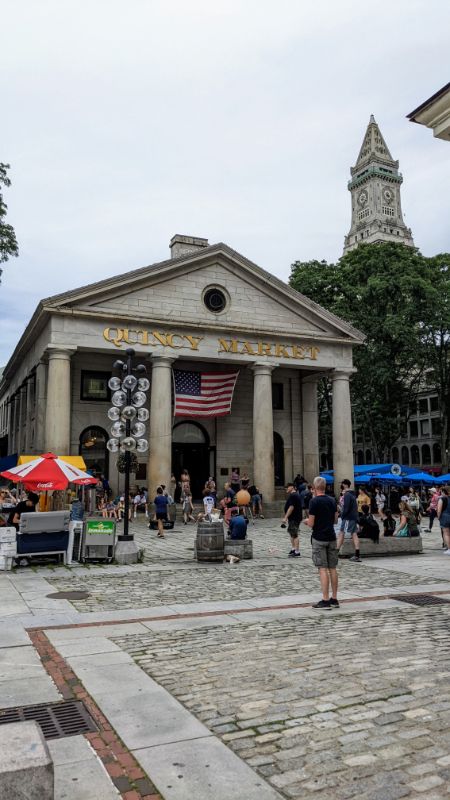
We got New England clam chowder in a bread bowl and a falafel wrap, in case you are wondering.
Stop 9 – The Paul Revere House
Bellies full, we walked quite a ways along the Freedom Trail through the North End of Boston. We eventually reached the Paul Revere House, home of Paul Revere during the time of the American Revolution.

Unless you are new to the United States of America, Paul Revere needs no introduction. And if he is an unfamiliar name, the above link will provide all of the historical context you need.
Stop 10 – Old North Church
Continuing through the North End of Boston, the Freedom Trail led us to the Paul Revere Mall…
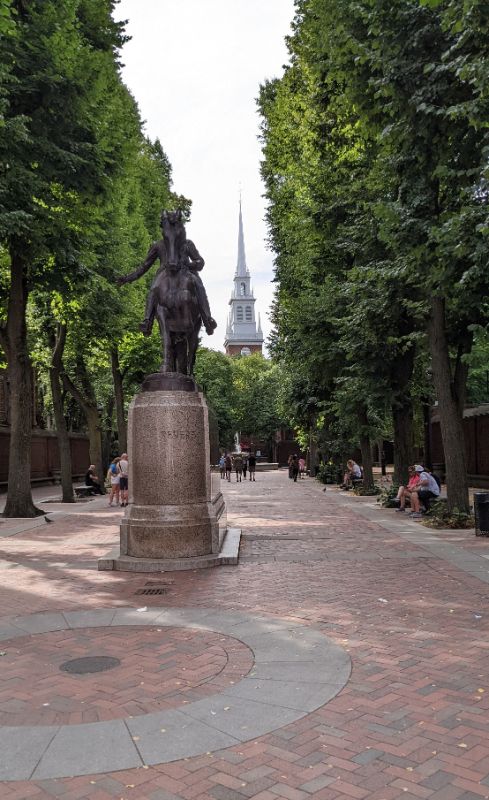
And onward to the Old North Church.

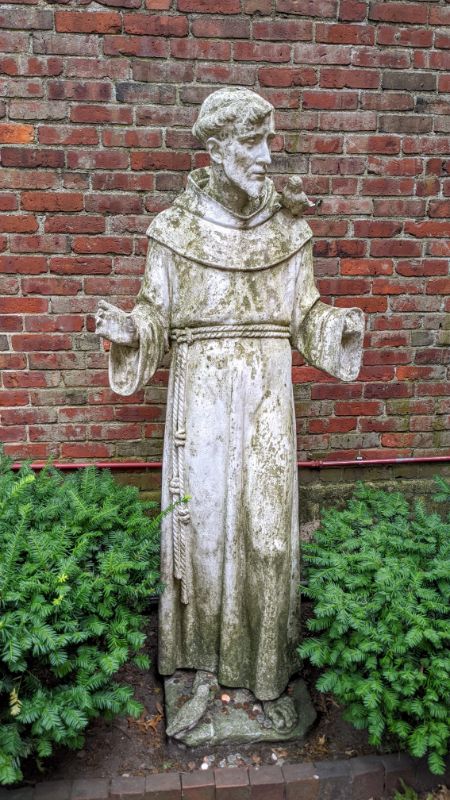
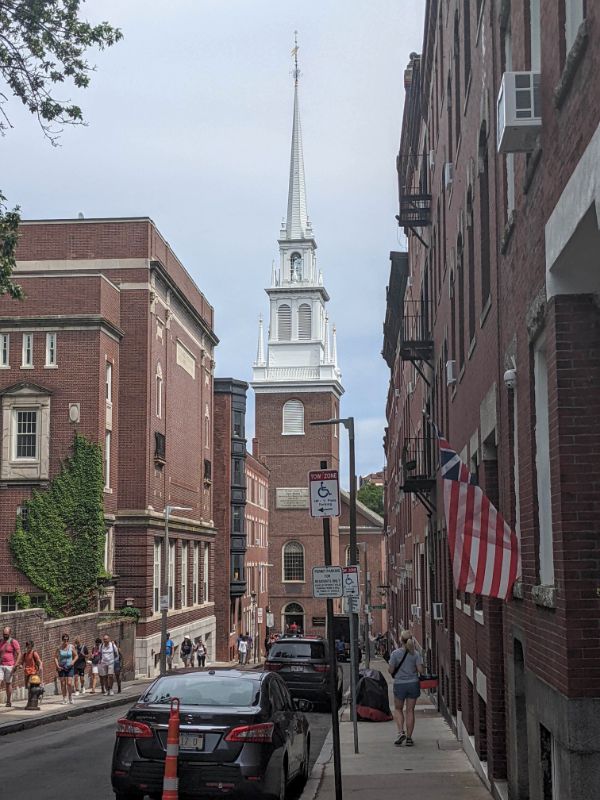
The tower of Old North Church is known for signaling “one if by land, two if by sea”, of Paul Revere’s midnight ride fame.
Pretty cool.
Stop 11 – Bunker Hill Monument
We continued for another long stretch, up the hill from the Old North Tower…
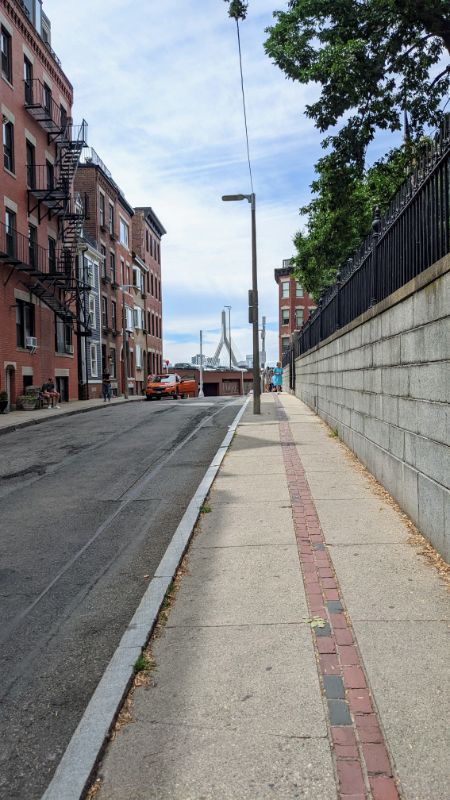
Across the Charles River, and through winding streets in old colonial neighborhoods. We eventually spied the Bunker Hill Monument in the distance.

Up close the monument is particularly impressive.

Bunker Hill Monument commemorates the site of the Battle of Bunker Hill, which was one of the first battles of the Revolutionary War. The colonists lost, but the British sustained far more losses. This was a sign that the battles during the war wouldn’t be easy for the British, as they presumed.
Last Stop – The U.S.S. Constitution
The Freedom Trail continued onward, down Bunker Hill, and toward the harbor. Finally, the last of the Freedom Trail stops came into view: The U.S.S. Constitution.
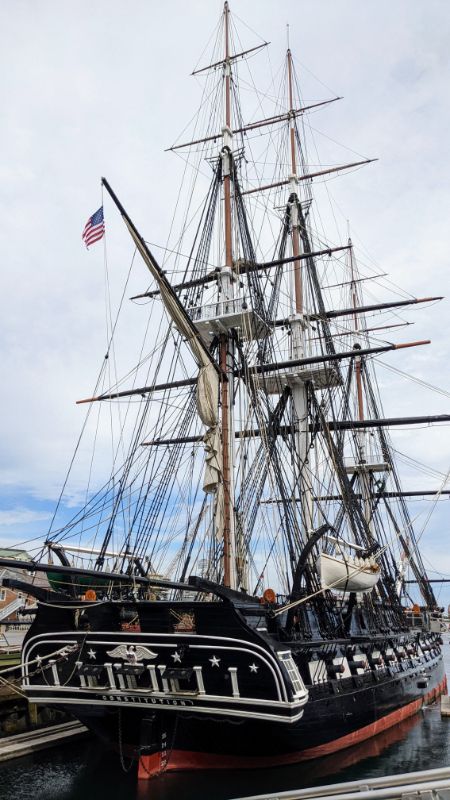
Also known as Old Ironsides, she was launched in 1797 and is the oldest vessel still afloat. She played her greatest role in the war of 1812, and helped capture or destroy numerous British ships.
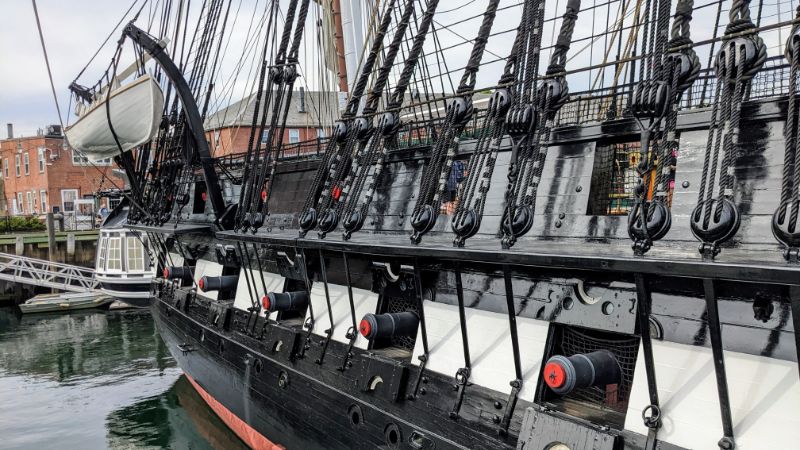
And Now, We Feast!
It was a great day, but a long one. The 2.5-mile Freedom Trail ballooned into a 12-mile excursion with all of our side explorations. We were beat!
Thankfully, we planned on meeting up with our good friend Mike who lives in Eastern Boston. He enjoys fine food and drink. And for this night, Mike made us a slow-cooked “gravy” and ravioli meal that was a feast for the senses.

The meal was outstanding, and we were introduced to a new style of Italian wine that was not on our radar previously – Primitivo.
A great end to a great day.
Thanks, Mike!
Thanks for reading!
If our posts have saved you time, money, or are enjoyable in some other way, BUY US A COFFEE! It helps cover the costs of our blog, keeps our blog ad-free, and motivates us to continue posting about our experiences.
And leave a comment below and subscribe to get email notifications whenever we post!
Follow Two Travel Turtles on Facebook and X.

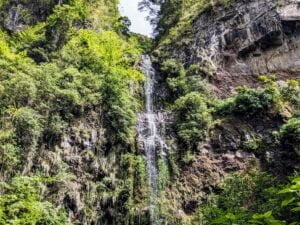
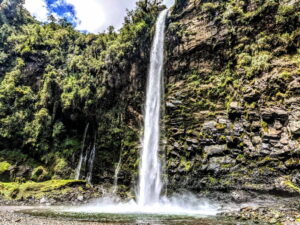
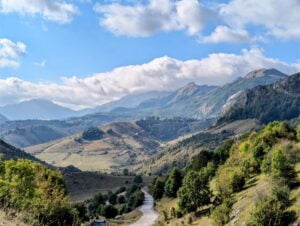
4 thoughts on “Following The Freedom Trail”
Following you on your journey
Much appreciated!
I had not realized the Bunker Hill monument was so large. And the Constitution looks amazing.
Beautiful places. Boston is steeped in history and I bet you would love it there.